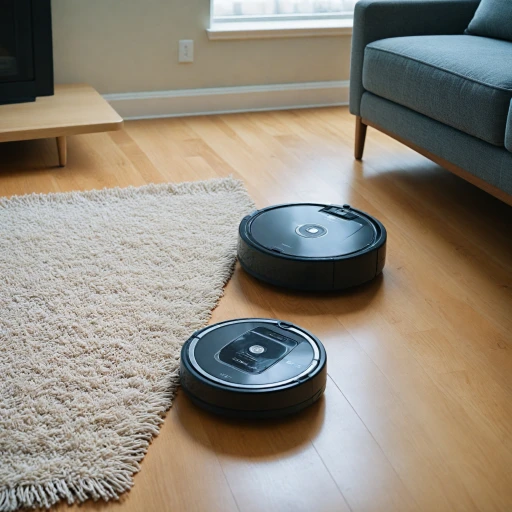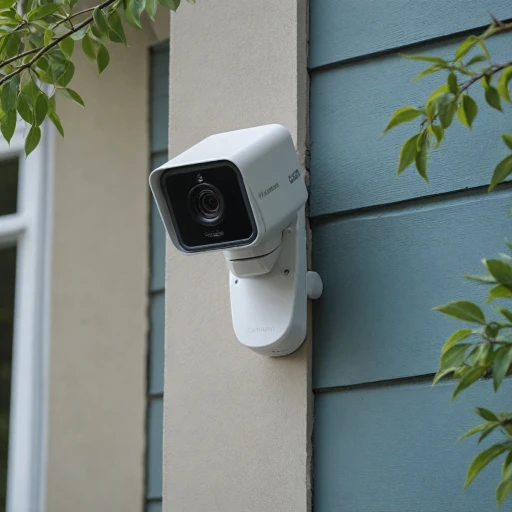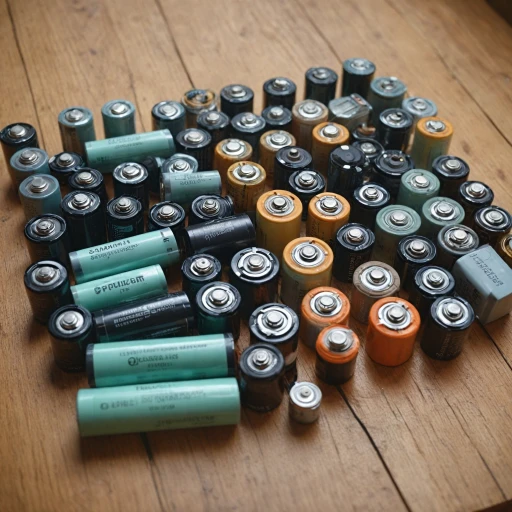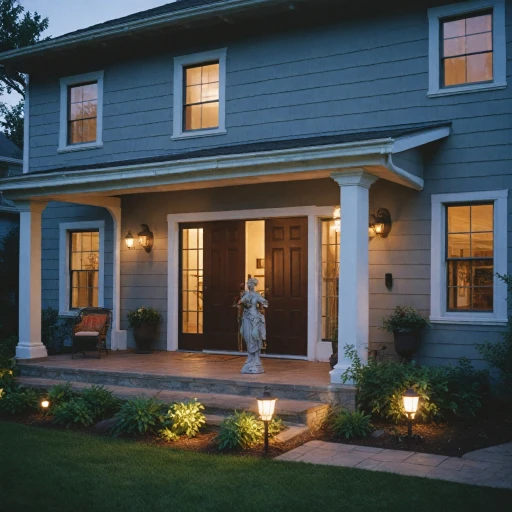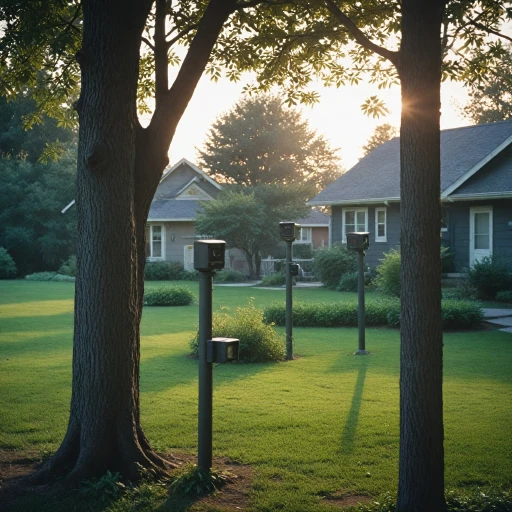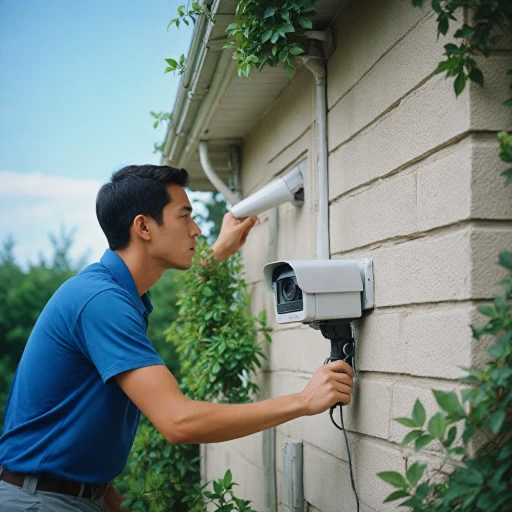
Understanding No Wi-Fi Security Cameras
Delving Into Security Cameras That Operate Without Internet
In the realm of home security, choosing the right security camera system can significantly enhance your property's safety. One interesting option you might come across is the no Wi-Fi security camera. These cameras operate independently of an internet connection, ensuring they continue to capture footage even in areas with poor wireless coverage or during temporary internet outages. Understanding how these cameras work can help you determine their suitability for your home security needs. Typically, such cameras rely on local storage options like microSD cards or link to an external device such as a Network Video Recorder (NVR) to store recorded footage. Certain models, like battery-powered outdoor security cameras, extend their functionality by using long-range capabilities to ensure broader coverage without relying on a network. For those considering alternative power sources, options like battery-powered cameras come into play. It's crucial to explore the right batteries for your Blink camera to ensure optimal performance, especially in outdoor environments where continuous power supply is a necessity. Recognizing the particular needs of your security setup, from local storage requirements to battery life, can guide you towards selecting the best no Wi-Fi security camera to safeguard your home.Advantages of No Wi-Fi Security Cameras
Benefit from Independence and Security
When it comes to security cameras, many homeowners are discovering the advantages of having systems that don't rely on Wi-Fi connectivity. Whether you are looking for a security camera to monitor your outdoor area or an indoor security system, opting for a non-Wi-Fi camera offers numerous benefits.- Enhanced Privacy: Without the risk of online hacking, these cameras ensure that your video footage stays private. Local storage options, like a microsd card or an NVR, keep your data secure while providing you with peace of mind.
- Unrestricted Placement: Non-Wi-Fi cameras give you the freedom to place them wherever you need them. Unlike wireless cameras, you're not limited by the range of your Wi-Fi network. This can be particularly useful for outdoor security, where a long range is essential.
- Reliable Continuity: Wi-Fi systems can become unreliable due to internet outages or slow network speeds. No Wi-Fi security cameras continue recording even if your internet encounters issues. You can rely on consistent motion detection and camera system operation.
- Cost-Effective Solution: While some may invest in cloud storage options, there is often an additional cost involved. Non-Wi-Fi security cameras eliminate this recurring expense, providing a more budget-friendly solution with local storage.
- Simple to Install and Use: Many security cameras Wi-Fi or not, can be complex. However, non-Wi-Fi setups can often be simpler, especially if they are battery-powered, reducing installation hassles. These systems tend to be plug-and-play, which means you can avoid the headaches of complex configuration processes.
- Flexible Compatibility: Non-Wi-Fi cameras, like the Reolink, Eufy, or Cam models, are known for their compatibility with other security systems, including those integrated with smart assistants like Alexa or Google, without necessitating Wi-Fi links.
Challenges and Limitations
Navigating the Challenges and Constraints
While security cameras that don’t rely on Wi-Fi offer distinct advantages, they are not without their challenges. For individuals considering these types of systems, it's essential to understand the constraints.
One of the primary challenges is storage limitations. Without the cloud-based option provided by many Wi-Fi security cameras, footage storage depends on local solutions like NVRs, microsd cards, or USB storage. This can mean limited capacity, requiring careful management to ensure critical footage is not overwritten.
Another consideration is system complexity. These cameras often need a more involved setup process, potentially requiring additional cabling for powering the cameras and connecting them to recording devices. This is where systems like PoE camera systems can simplify installation by using a single cable for power and data transfer.
The absence of internet connectivity also means that remote access to the video feed is typically unavailable. For users who prioritize having real-time remote monitoring capabilities, this can be a significant drawback.
Moreover, while some battery powered models offer more flexibility in placement due to their wireless nature, they often require regular maintenance to ensure the batteries are charged or replaced promptly. Long range connections may also be constrained, impacting performance and reliability.
A final point to consider is the integration with smart systems. Most non-Wi-Fi security cameras lack direct integration with smart home systems like Alexa and Google Home, limiting smart home automation potential.
Understanding these challenges enables you to weigh the pros and cons effectively and thus ensures you choose the best security solution that suits your unique needs without compromising on what’s most important for your home’s security.
Types of No Wi-Fi Security Cameras
Types of Security Cameras That Don’t Rely on Wi-Fi
When considering security cameras that don't require Wi-Fi, it's important to understand the different types available. These options cater to various needs, whether it's due to the lack of wireless capabilities or a preference for enhanced security measures.- Hardwired Security Cameras: These are the traditional choice, providing a stable connection with no reliance on internet or wireless factors. They often come with PoE (Power over Ethernet), which allows them to draw power and transmit video over a single cable. While installation might be more labor-intensive, they are less susceptible to interference than wireless security systems.
- Battery-Powered Cameras: Ideal for areas where cabling is impractical, these cameras score high on flexibility. They work efficiently for outdoor security and are equipped with features like motion detection and night vision. Brands like eufy cam and Reolink offer battery-powered options that store footage locally, ensuring data privacy.
- System with Local Storage: This involves cameras that store video on a microsd card or an NVR. This option is particularly useful for those concerned with the security of their footage and data, as it bypasses the intricacies and vulnerabilities of cloud storage. Local storage cameras work independently, using card slots to store recorded footage.
- Sim Card-Equipped Cameras: These cameras are fantastic for locations where Wi-Fi is unreliable, using cellular networks to store data. Ideal for remote locations, they offer a security solution that doesn’t require you to frequently access the camera's data physically.
Installation and Maintenance Tips
Practical Installation Instructions
The process of installing a security camera without Wi-Fi might seem daunting, but with the right guidance, it can be straightforward. Here’s how you can ensure your cameras are set up for optimal performance:
- Select the Ideal Location: Decide on strategic areas for your camera placement. Outdoor security cameras often work best at entry points like doors and windows. Consider areas that require constant monitoring and make use of motion detection features.
- Consider Power Source: Depending on the model of your security camera, whether it’s battery powered or requires a direct power connection, ensure that the power setup is suitable. Battery powered options like those offered by brands like Reolink or Eufy provide flexibility in placement.
- Ensure Proper Cabling: For non-wireless security systems, ensure that any necessary cables such as Ethernet cables or coaxial cables are safely and securely run to avoid any damage. This is crucial for NVR systems that require wired connectivity.
- Configure Settings: Once installed, configure your settings such as night vision capabilities, resolution and local storage options. Opt for high-capacity microsd cards or external storage solutions depending on your local storage needs.
- Integration with Existing Systems: If you’re using a hybrid system that combines wireless and non-wireless cameras, ensure you integrate them into your current security system effectively for comprehensive coverage.
Maintenance Guidelines
Maintaining your security camera is crucial to ensure prolonged usage and reliability. Regular upkeep can prevent potential operational issues:
- Regular Cleaning: Dust and dirt accumulation can impair footage quality. Wipe the lens of your cameras with a soft, clean cloth regularly, especially for outdoor models.
- Battery Maintenance: For battery powered models, keep track of battery life and replace or recharge them as required to maintain continuous surveillance capabilities.
- Software Updates: Ensure that any firmware updates are promptly installed to keep security features up to date. Staying updated can enhance the camera performance and security protocols.
- Check for Physical Damage: Periodically inspect your cameras for any physical damage that could impede their function, especially after storms or extreme weather conditions.
By following these tips, you can effectively install and maintain your home security camera system, ensuring that your home is well-protected at all times.
Choosing the Right Camera for Your Needs
Determine Your Security Needs
When selecting a security camera without relying on Wi-Fi, it's essential to first assess your specific needs. Consider the area you need covered, whether it's your front porch or a full outdoor perimeter. Understanding the scope will help narrow your choices to the best camera suited for the job.Connectivity and Power Source
Evaluate how the camera receives power and transmits data. Some cameras rely on wired connections, while others offer battery-powered options allowing for more flexible placement. For instance, Reolink's outdoor security options provide reliable choices for areas lacking easy access to power outlets.Storage Options
With no Wi-Fi, opt for local storage solutions like a microsd card or a NVR system to safely store video footage. It's imperative to consider the storage capacity, especially if you're expecting a lot of recorded video. This approach not only ensures reliability but also enhances data privacy.Camera Features
Decide on essential features such as night vision for 24/7 surveillance or motion detection to promptly alert you of any activity. Some cameras also support long range lenses which can be beneficial for monitoring larger areas. Products from brands like Eufy or Tapo offer various models that combine these features efficiently.Integration with Existing Systems
If you already have a security system at home, check for compatibility. Some cameras can seamlessly integrate with Alexa or Google Home, offering enhanced connectivity options that can work alongside your Wi-Fi-dependent systems.Remember, the best choice for you depends on your unique security requirements and the specific challenges of your property. By carefully considering these elements, you'll be better prepared to choose the most suitable camera that provides peace of mind and reliable security.


